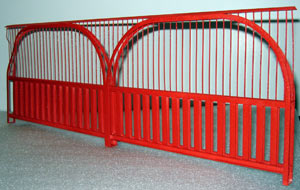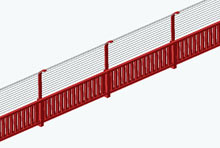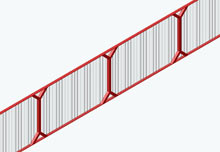UC Berkeley Web Feature
UC Berkeley engineering students to showcase Golden Gate Bridge suicide barrier designs
BERKELEY – Engineering students from the University of California, Berkeley, will present models of Golden Gate Bridge suicide barriers at a reception on Wednesday, May 25, two days before the 68th anniversary of bridge's opening to the public.
 This flowing arch model is one of several suicide barrier designs for the Golden Gate Bridge created by UC Berkeley civil engineering students. (Photo by Douglas Wahl / UC Berkeley) |
The models were created as part of an undergraduate course taught by Robert Bea, UC Berkeley professor of civil engineering, that emphasizes the incorporation of real-life constraints - including cost, environmental regulations and politics - into design proposals for engineering projects.
The four-student project team will present their completed designs before an audience of friends and relatives of people who have jumped from the landmark bridge, as well as several officials from the Golden Gate Bridge, Highway and Transportation District.
 Computer-generated renderings of other potential barrier designs include a modified pedestrian railing (above) and a split-post design (below). (Images courtesy Douglas Wahl / UC Berkeley)  |
Although the students approached the task as if they were making a formal proposal, the student models are not part of the actual design and environmental studies expected to be undertaken - pending funding - by the bridge district. Last month, the Metropolitan Transportation Commission allocated $1.6 million toward design and environmental studies of a possible suicide barrier for the bridge. An additional $400,000 is still required from sources outside the district to fully fund the studies.
This year's students are building upon work done by predecessors who took Bea's course in 1998. That year, the project team concluded that a suicide barrier for the Golden Gate Bridge could be both effective and attractive.
One of the students on this year's team had a personal motivation for joining the project.
"I had a cousin who committed suicide in 2001," said Douglas Wahl a senior in civil engineering. "She didn't jump from a bridge, but that experience prompted me to think about what goes through people's minds when they're thinking about killing themselves. Suicide is often an impulsive act. If we can take away the means to easily complete the act, such as by creating a barrier on a bridge, we can often get people past that suicidal state."
The event, to be held in San Francisco, is sponsored by the Psychiatric Foundation of Northern California.

